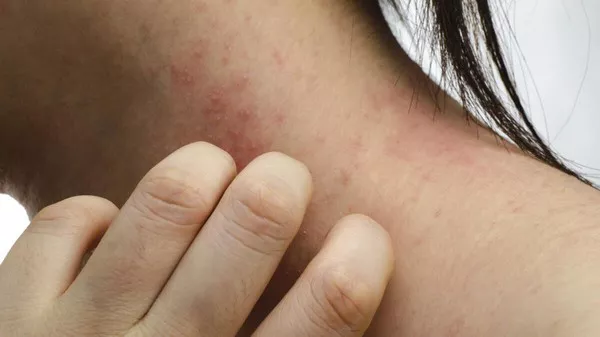In the realm of public health, access to vaccines plays a pivotal role in preventing the spread of infectious diseases and safeguarding individual and community well-being. Shingles, caused by the varicella-zoster virus, can result in painful rashes and long-term complications, particularly among older adults and immunocompromised individuals. The introduction of the Shingrix vaccine has heralded a new era in shingles prevention, boasting higher efficacy compared to its predecessor. However, a pressing concern for many is whether Medicaid, the state and federally funded health insurance program for low-income individuals, covers the cost of the Shingrix vaccine. In this comprehensive guide, we delve into the intricacies of Medicaid coverage for Shingrix, elucidate eligibility requirements, delineate the process for obtaining coverage, and provide alternative resources for those facing limitations in coverage.
Medicaid Coverage for Shingrix: Unraveling the Complexities
Medicaid, administered by individual states under federal guidelines, typically covers a wide array of medical services and treatments, including vaccines deemed medically necessary. However, the specifics of coverage for the Shingrix vaccine may vary based on state policies, Medicaid plans, and individual circumstances.
Variations in Coverage
Medicaid coverage for the Shingrix vaccine may be subject to variations depending on several factors:
1. State Policies: Each state has the autonomy to determine its Medicaid coverage policies, including which vaccines are included in their formularies. While some states may provide comprehensive coverage for Shingrix, others may impose restrictions or require prior authorization.
2. Medicaid Plans: Within each state, there may be different Medicaid managed care plans, each with its own set of coverage guidelines. It’s essential for Medicaid beneficiaries to ascertain the specific coverage provisions of their respective plans.
3. Individual Circumstances: Medicaid coverage may be influenced by individual factors such as age, health conditions, and vaccination history. Certain states or plans may prioritize coverage for older adults or individuals with certain medical conditions that predispose them to shingles.
Out-of-Pocket Costs
While Medicaid typically covers the cost of vaccines, including Shingrix, beneficiaries may still encounter out-of-pocket expenses in some instances. These costs could arise from copayments, deductibles, or coinsurance requirements imposed by Medicaid plans. Additionally, if the vaccine is administered during a healthcare provider visit that requires a copayment, beneficiaries may be responsible for that portion of the cost.
Eligibility Requirements for Receiving Shingrix under Medicaid
To access the Shingrix vaccine through Medicaid, beneficiaries must meet certain eligibility criteria, which may include:
1. Age Restrictions: While shingles can affect individuals of any age, the risk increases with age. Therefore, Medicaid may prioritize coverage for individuals within certain age brackets, typically those over the age of 50 or 60.
2. Health Status: Individuals with certain medical conditions, such as immunodeficiency disorders or chronic illnesses, may be at heightened risk of developing complications from shingles. Consequently, Medicaid may extend coverage to those with specific health conditions deemed high risk.
3. Prior Vaccination History: Some Medicaid plans may require beneficiaries to demonstrate a lack of prior vaccination against shingles or provide evidence of vaccination eligibility based on recommended guidelines.
Process for Obtaining Coverage
Navigating the process of obtaining coverage for the Shingrix vaccine under Medicaid requires diligence and awareness of the following steps:
1. Check Medicaid Coverage: Before seeking vaccination, beneficiaries should verify whether their Medicaid plan covers the Shingrix vaccine and any associated costs. This information can typically be obtained by contacting the Medicaid provider or accessing plan documents online.
2. Consult Healthcare Provider: Beneficiaries should consult their healthcare provider to determine their eligibility for the Shingrix vaccine based on age, health status, and vaccination history. Healthcare providers can also assist in obtaining any necessary documentation or prior authorization required by Medicaid.
3. Schedule Vaccination: Once eligibility is confirmed and coverage is ensured, beneficiaries can schedule an appointment with their healthcare provider or a participating vaccination clinic to receive the Shingrix vaccine. It’s advisable to inquire about any potential out-of-pocket costs beforehand to avoid surprises.
4. Submit Claims: Following vaccination, healthcare providers will typically submit claims for reimbursement to Medicaid on behalf of the beneficiary. It’s important for beneficiaries to review their Medicaid statements to ensure accuracy and address any discrepancies promptly.
Alternatives and Resources
In the event that Medicaid coverage for the Shingrix vaccine is limited or unavailable, beneficiaries can explore alternative options to access vaccination at a lower cost:
1. Patient Assistance Programs: Pharmaceutical companies often offer patient assistance programs designed to provide financial assistance or discounts for eligible individuals who cannot afford the cost of vaccines, including Shingrix. These programs may have specific eligibility criteria and application processes.
2. Manufacturer Discounts: Manufacturers of vaccines such as Shingrix may offer discounts or rebates to healthcare providers or pharmacies, which can translate to lower out-of-pocket costs for Medicaid beneficiaries. It’s worth inquiring about any available discounts when scheduling vaccination appointments.
3. Vaccine Information Portals: Official vaccine information portals, such as those provided by the Centers for Disease Control and Prevention (CDC) or the Food and Drug Administration (FDA), offer valuable resources on vaccine recommendations, safety, and access. These portals may also contain information on Medicaid coverage and alternative vaccination options.
4. Healthcare Provider Directories: Medicaid beneficiaries can utilize healthcare provider directories provided by their Medicaid plans to locate participating providers or vaccination clinics offering the Shingrix vaccine. These directories often include contact information, addresses, and specialty services offered by each provider.
Conclusion
In conclusion, while Medicaid generally covers the cost of the Shingrix vaccine, specific coverage provisions and eligibility criteria may vary depending on state policies, Medicaid plans, and individual circumstances. By understanding the nuances of Medicaid coverage, navigating the eligibility requirements, and leveraging alternative resources when necessary, beneficiaries can ensure access to this vital preventive measure against shingles, thereby safeguarding their health and well-being.


























